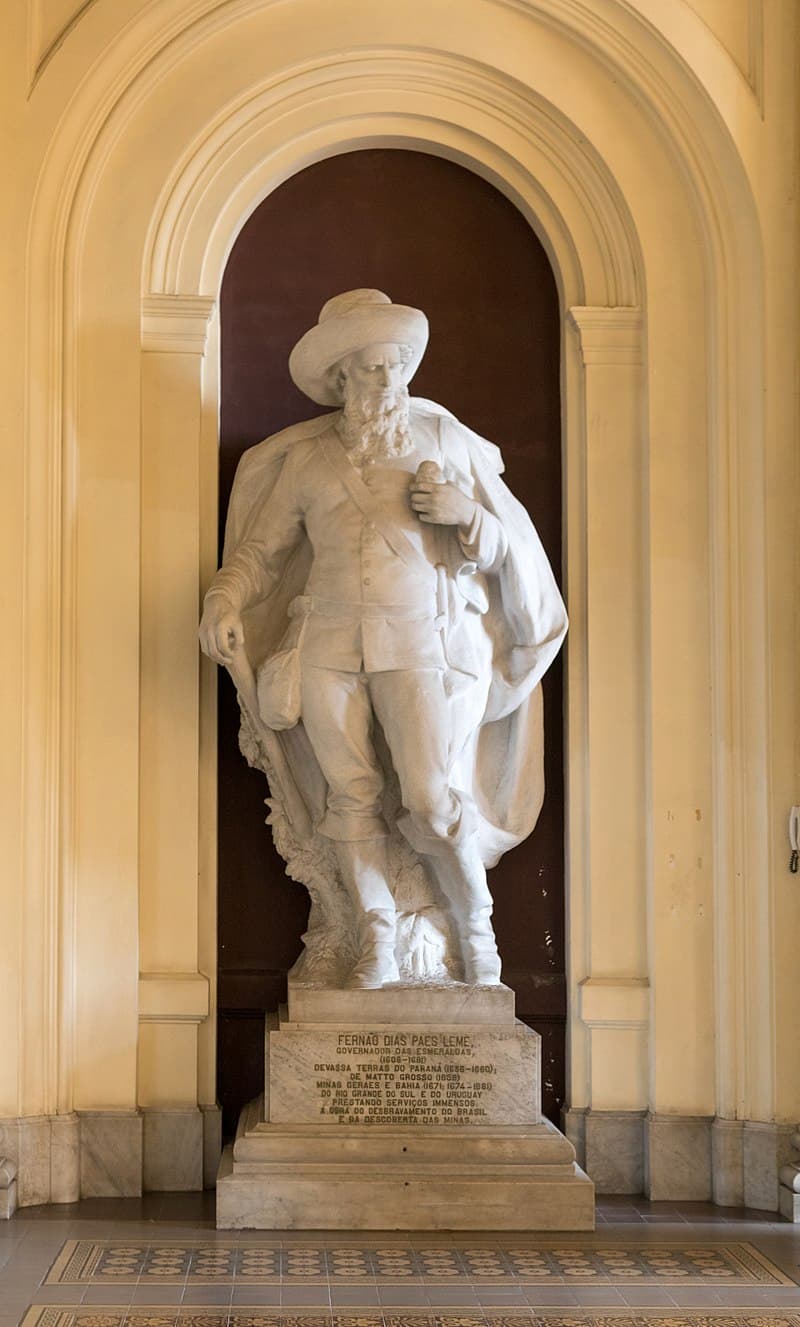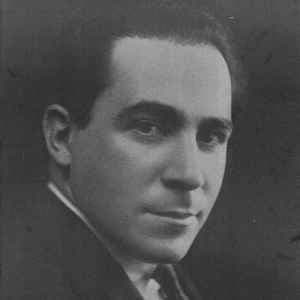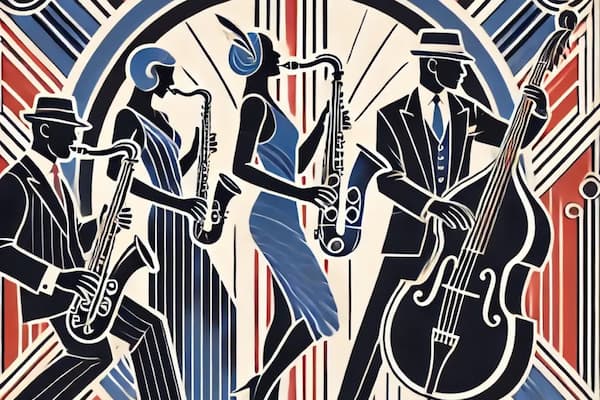Brazilian composer Oscar Lorenzo Fernández (1897–1948) based the idea of his second symphony, written in 1947, on the life of Fernão Dias Paes Leme (1608–1681), known as ‘The Emerald Hunter’.

Luigi Brizzolara: Statue of Fernão Dias Pais, ca 1920 (Ipiranga Museum)
This 17th-century explorer was granted a patent to become ‘governor of the emeralds’ in 1672 and set out to discover his area’s silver and emerald mines. He controlled areas in southwestern Brazil that shared borders with Argentina and Paraguay and, in the name of the Church, enslaved the Indians of the region. He left on his final expedition in July 1674 and succeeded in finding the green gems he sought. He sent word of his success to São Paulo via his nephew and a collection of 147 green stones but died of swamp fever on his way back out of the jungle.
His legend lives on in Brazil through literature, the visual arts, cinema, and theatre. His story was used to burnish the stories of other mineral explorers, who had been largely castigated by the Jesuits for exploiting the local populations in their search for wealth.
The great Brazilian poet Olavo Bilac (1865–1918) made Fernão Dias Pais the subject of his poem O Caçador de Esmeraldas, which Lorenzo Fernandez used as the basis for his symphony.

Oscar Lorenzo Fernández
The poem is written in 276 alexandrines (12-syllable lines), a verse type often used for heroic verse, arranged into 26 six-line stanzas. The poem details the challenges faced by the explorer as he ventures into the green unknown: the weather, the Indians whose lands he was crossing, and his own party that fearfully moved into ‘the dark forest, in whose impenetrable depths only the fleet tapir ran and the fierce jaguar roared’.
Through the symphony, we go through all the emotions on such a trip: hope, heroism, struggle, and discovery, to be followed by delirium and death in the last movement. Although it could be considered a program work, he achieves the story through emotional music rather than pictorial music – no dancing villagers or racing waters, but rather a sense of danger or achievement in the music and harmonies.
The symphony starts off with a heroic fanfare that also seems somewhat dark. Movement forward is stealthy, venturing off into the unknown, yet with an undercurrent of optimism.
Oscar Lorenzo Fernández: Symphony No. 2, “O Caçador de Esmeraldas” (The Emerald Hunter) – I. Allegro moderato e pesante (Enérgico) (Minas Gerais Philharmonic Orchestra; Fabio Mechetti, cond.)
The second movement, Molto allegro et misterioso, is the group in the middle of the forest, with new sights and new sounds constantly putting them on their guard.
Oscar Lorenzo Fernández: Symphony No. 2, “O Caçador de Esmeraldas” (The Emerald Hunter) – II. Molto allegro e misterioso (Minas Gerais Philharmonic Orchestra; Fabio Mechetti, cond.)
The third movement, Lento e lamentoso, is the end of the struggle. Seven years of searching, seven years without love (as the poem puts it), with Death always at his side, and with killing axes ‘biting the trunks’ of the trees.
Oscar Lorenzo Fernández: Symphony No. 2, “O Caçador de Esmeraldas” (The Emerald Hunter) – III. Lento e lamentoso (Minas Gerais Philharmonic Orchestra; Fabio Mechetti, cond.)
The final movement starts with the amazing discovery of the green stones he was seeking but ends with his own death from swamp fever.
Oscar Lorenzo Fernández: Symphony No. 2, “O Caçador de Esmeraldas” (The Emerald Hunter) – IV. Allegro mosso e agitato (Minas Gerais Philharmonic Orchestra; Fabio Mechetti, cond.)
Unfortunately, what Fernão Dias Paes had discovered were not emeralds (now ca $6,000 per carat) but the less valuable tourmalines (now $300 per carat), but as part of his other discoveries, he also found gold. Bilar’s poem ends with an optimistic note: our hero will die, but in his actions, he has opened the land for the people. He will never be forgotten, whether as a violator of the interior or a planter of cities.
For more of the best in classical music, sign up for our E-Newsletter



